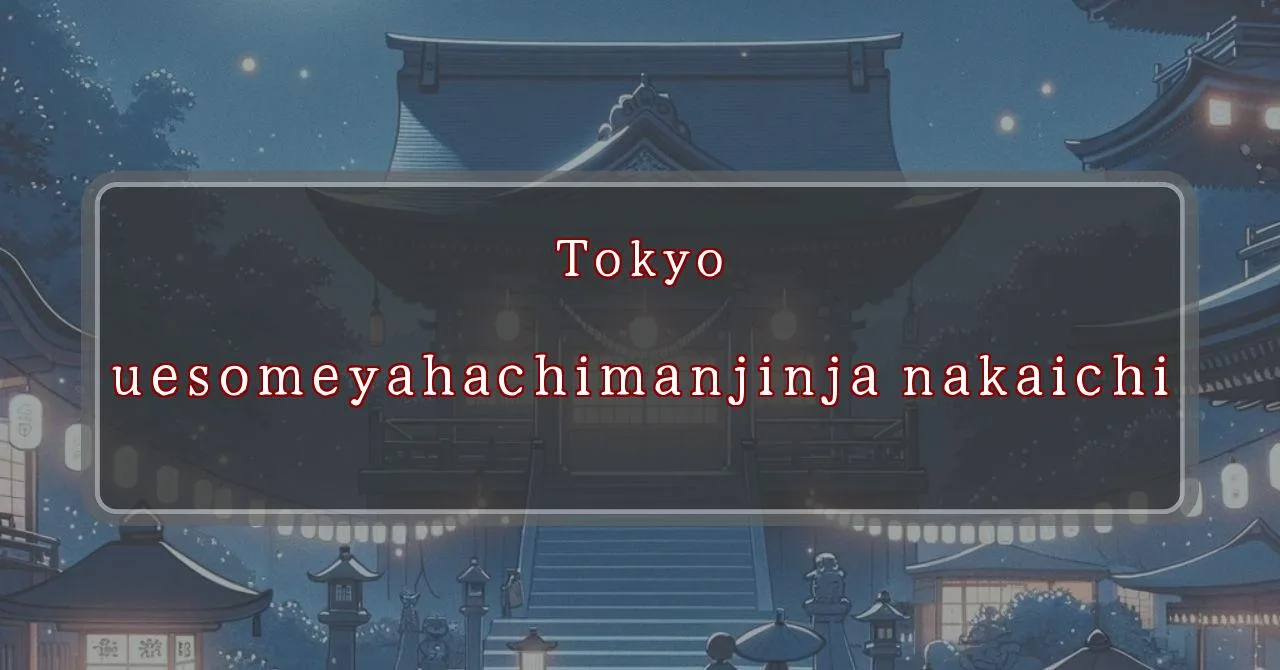Enchanting Shrine Festival in Tokyo: Unveiling the Secrets of History and Faith
Basic Information
Kamiyadoya Hachiman Shrine is a Shinto shrine located in Nakashi, Chuo Ward, Tokyo, Japan.
- Address: 2-16-2 Soto-Kanda, Chiyoda-ku,>Access: 5-minute walk from Ochanomizu Station, Tokyo Metro Marunouchi Line, Seibu Shinjuku Line, or JR Chuo Line; 7-minute walk from Akihabara Station, JR Sobu Line, Tokyo Metro Hibiya Line, Tsukuba Express; 5-minute walk from Suehirocho Station, Tokyo Metro Ginza Line
- Festival Days: May 15th, 2024
Main Events and Attractions of the Festival
Kamiyadoya Hachiman Shrine’s annual festival is held on May 15th, 2024, and features a variety of traditional events and attractions.
Mikoshi Procession
The highlight of the festival is the Mikoshi Procession, where a portable shrine is carried through the streets of the neighborhood by local residents. The Mikoshi is believed to house the spirit of the shrine’s deity, and the procession is a way to pay respects and pray for good fortune.
Shishimai Dance
Another popular attraction is the Shishimai Dance, a traditional lion dance performed by local children. The Shishimai is a mythical creature that is believed to bring good luck and ward off evil spirits, and its dance is a lively and entertaining spectacle.
Kagura Performance
Kagura is a sacred Shinto dance performed by shrine maidens, and it is a common sight at Japanese festivals. The Kagura at Kamiyadoya Hachiman Shrine is particularly elaborate and features a variety of different dances, each with its own unique meaning and purpose.
Food and Games
In addition to the traditional events, the festival also features a variety of food stalls and games, making it a fun and lively event for people of all ages.
Blessings and Deities
Kamiyadoya Hachiman Shrine is dedicated to the deity Hachiman, the god of war and archery. Hachiman is one of the most popular deities in Japan, and is revered for his bravery, strength, and protection. He is also seen as a guardian of the nation and its people.
- Hachiman: God of war and archery, guardian of the nation
- Inari: God of rice and agriculture, patron of merchants and businesses
- Benten: Goddess of fortune, luck, and wealth
Origin and History
The origins of Kamiyadoya Hachiman Shrine are unclear, but it is believed to have been founded in the 12th century. The shrine was originally located in a different part of Tokyo, but was moved to its current location in the 16th century. The shrine has been rebuilt and renovated several times over the centuries, but the main building dates back to the 18th century.
- Founded: 12th century
- Moved to current location: 16th century
- Main building: 18th century
Tips and Notes for Visitors
When visiting Kamiyadoya Hachiman Shrine, please be respectful of the following rules and customs:
- Remove your shoes before entering the main shrine building.
- Wash your hands and mouth at the chozuya (purification fountain) before praying.
- When praying, bow twice, clap your hands twice, and then bow once more.
- Offer a small donation (o-saisen) to the shrine.
- Photography is not permitted inside the main shrine building.
Parking Information
There is no dedicated parking lot for Kamiyadoya Hachiman Shrine. However, there are several coin-operated parking lots in the surrounding area.
Popular Stalls and Food Carts in Recent Years
| Type of Stall | Description |
|---|---|
| Takoyaki | A staple at Japanese festivals. Characterized by a crispy outside and a creamy inside. |
| Jaga Butter | A simple yet popular snack of hot potatoes lavishly topped with melted butter. |
| Baby Castella | Small castella cakes, sweet and fluffy treats enjoyed by children and adults alike. |
| Grilled Ayu with Salt | Fresh ayu fish grilled whole with salt, a savory taste of Japanese summer. |
| Shaapin | A unique gourmet item influenced by foreign cuisine, with a chewy skin wrapping the filling. |
| Okonomiyaki | A Japanese grilled dish where you often choose your own ingredients for a personalized flavor. |
| Cotton Candy | A fluffy, sweet snack that’s extremely popular with children. |
| Chocolate Banana | A banana coated in chocolate, a fun and visually appealing dessert. |
| Kushiyaki | Various types of ingredients skewered and grilled, an easy-to-enjoy snack. |
| Yakisoba | Fried noodles mixed with a special sauce, a fast food favorite in Japan. |



